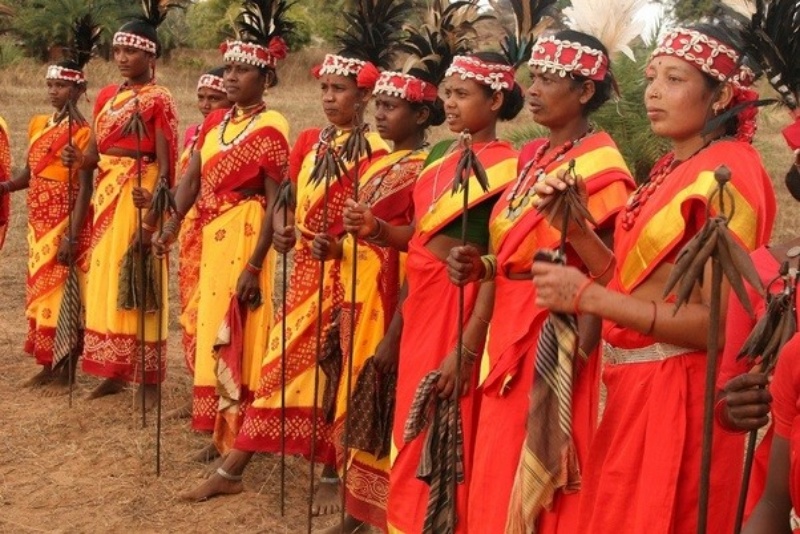The Gond - Tribes of Madhya Pradesh
Mandla
Tribal Tour-Gond Tr
Mandla
All districts, mainly spread on both banks of Narmada River in Vindhyas and Satpura, Balaghat.
The Gond groups are found in Majorly Chhindwara. They are also settled by the rivers of Betul, among the hills of Seoni and Balaghat. They have an extensive legendary history of their past heroes. Tribals of Bastar come under this group. The Gonds are a great people with stirring memories and passionate poetry. They seem to have entered the wilds of Baster along the banks of the Godavari. In the fourteenth century they were the ruling class in many parts of central India. They built palaces, forts, tanks and lakes but owing to their over-simplicity and tolerance they failed to retain their establishments. Towards the end of the eighteenth century they were found scattered into many tribes.
The Gondi (G?ndi) or Gond people are Adivasi people of central India, spread over the states of Madhya Pradesh, eastern Maharashtra (Vidarbha),[4] Chhattisgarh, Uttar Pradesh, Telangana, Andhra Pradesh, Bihar and Western Odisha.
The Gond are also known as the Raj Gond. The term was widely used in 1950s, but has now become almost obsolete, probably because of the political eclipse of the Gond Rajas. The Gondi language is closely related to the Telugu, belonging to the Dravidian family of languages. About half of Gonds speak Gondi languages while the rest speak Indo-Aryan languages including Hindi.
The Gond called themselves Koi or Koiture, but others called them Gond since they lived in the green mountains.
Gondi belongs to the Dravidian family of languages and is related to Tamil and Kannada. The language offers a cultural connection between the many Gond groups. Many Gonds also speak Hindi, Marathi, or Telegu.
The Gonds are among the largest tribal groups in South Asia and perhaps the world. The term Gond refers to tribal peoples who live all over India's Deccan Peninsula. Most describe themselves as Gonds (hill people) or as Koi or Koitur.
Scholars believe Gonds settled in Gondwana, now known as eastern MadhyaPradesh, between the ninth and thirteenth centuriesAD. Muslim writers describe a rise of Gond states after the fourteenth century. Gond dynasties ruled in four kingdoms (Garha-Mandla, Deogarh, Chanda, and Kherla) in central India between the sixteenth and mid-eighteenth centuries.
Marathapower swept into Gond land in the 1740s. They overthrew Gondrajas(princes) and seized most of their territory. Some Gondzamindaris(estates) survived until recently. However, Gonds are similar to many tribal groups today in that they face severe economic hardships. Although some Gond groups own a great deal of land, others are classified as Scheduled Tribes, which means they need special social and economic help.
Source of Information is Internet, Might vary, Kindly crosscheck/reconfirm before finalizing the Tour Plan.
